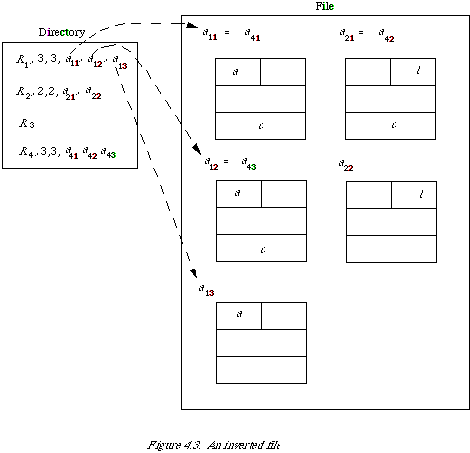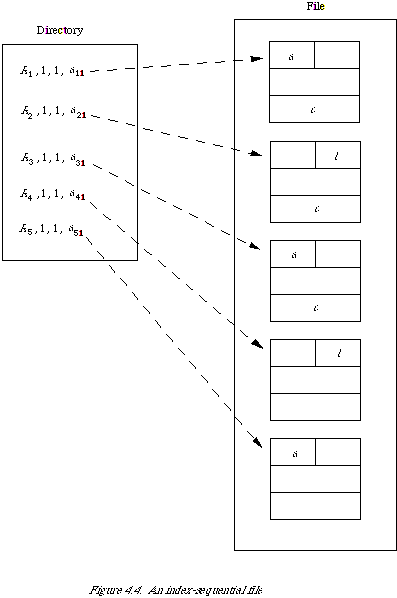|
|
73 |
|
|
|
|
arise if each record has just one unique keyword, or one unique attribute-value. In practice therefore, this set of records may be order sequentially by a key. Each key value appears in the directory with the associated address of its record. An obvious interpretation of a key of this kind would be the record number. In our example none of the attributes would do the job except the record number. Diagrammatically the index-sequential file would therefore appear as shown in Figure 4.4. I have deliberately written Ri instead of Ki to emphasise the nature of the key.
In the literature an index-sequential file is usually thought of as a sequential file with a hierarchy of indices. This does not contradict the previous definition, it merely describes the way in which the directory is implemented. It is not surprising therefore that the indexes ('index' = 'directory' here) are often oriented to the characteristics of the storage medium. For example (see Figure 4.5) there might be three levels of indexing: track, cylinder and master. Each entry in the track index will contain enough information to locate the start of the track, and the key of the last record in the track which is also normally the highest value on that track. There is a track index for each cylinder. Each entry in the cylinder index gives the last record on each cylinder |
|
|
73 |
|
|
|

